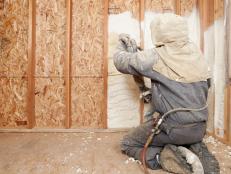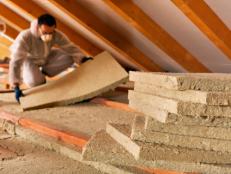How to Read a Window Energy Efficiency Label

Brand X Pictures
With the current emphasis on energy efficient windows, the National Fenestration Rating Council has designed an energy-performance label to guide contractors and homeowners in their search for the perfect window. Since the climates in different parts of the United States vary widely, checking the label before ordering the window can make a big difference in how much the window can help your client keep energy costs to a minimum. But what do all those numbers and codes on the label mean? Once you know what to look for, you'll be able to find exactly the right windows. Here's a quick tour:
NFRC Certified (upper left corner) indicates that the National Fenestration Ratings Council has licensed the window's manufacturer and certified the window's performance in accordance with NFRC's standards. The upper right corner identifies the window's manufacturer, model, style and the materials used in its construction.
Energy Performance Ratings
The U-factor. The rate of heat loss from a building is indicated in terms of the U-factor (U-value). U-Factor ratings for windows generally fall between 0.20 and 1.20. The lower the U-value, the greater a window's resistance to heat flow and the better its insulating value. (The window's insulating value is indicated by the R-value, which is the inverse of the U-value.)
The solar heat gain coefficient (SHGC) indicates how well a product blocks heat from the sun. The SHGC is the fraction of incident solar radiation admitted through a window and absorbed and subsequently released inward. SHGC is expressed as a number between 0 and 1. Again, the lower the number, the better: A low SHGC means the window transmits less solar heat.
Additional Performance Ratings
Visible transmittance is an optical property that indicates the amount of visible light transmitted. VT is expressed as a number between 0 and 1. The higher the VT, the more light is transmitted.
Air leakage* is expressed as the equivalent cubic feet of air passing through a square foot of window area (cfm/sq. ft). Heat loss and gain occur by infiltration through cracks in the window assembly. The lower the AL, the less air will pass through cracks in the window assembly.
Condensation resistance* measures the ability of a product to resist the formation of condensation on the interior surface of that product. The higher the CR rating, the better that product is at resisting condensation formation. While this rating cannot predict condensation, it can provide a credible method of comparing the potential of various products for condensation formation. CR is expressed as a number between 0 and 100.
For more information on NFRC ratings, visit the organization's website at www.nfrc.org.
* This rating is optional and manufacturers can choose not to include it.






































